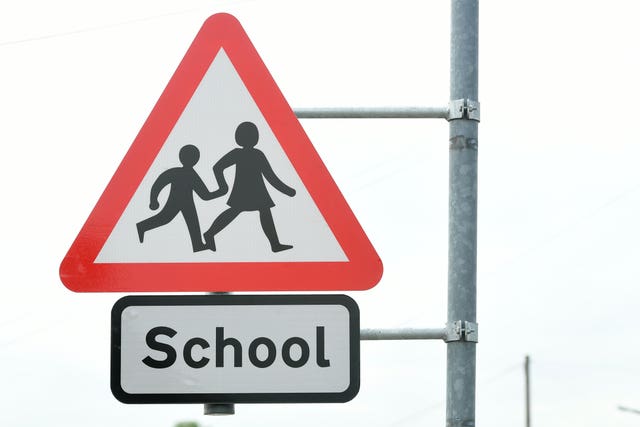
Cars should be banned from idling near schools in a bid to cut pollution, health experts have said.
In a new report, Public Health England (PHE) calls for a raft of measures, including stopping cars idling near school gates, promoting car pool lanes, and providing priority parking for electric cars.
It is also calling for congestion charges to be imposed in cities across the UK.
It is estimated that between 28,000 and 36,000 deaths a year can be attributed to long-term exposure to man-made air pollution. Our air quality review has actions that local authorities can take to reduce #AirPollution: https://t.co/5rcDVl8qjt pic.twitter.com/P0oYNRhbAT
— Public Health England (@PHE_uk) March 11, 2019
The report urges a “step change” in the uptake of low-emission vehicles by setting more ambitious targets for electric car charging points.
Experts also want to see cleaner public transport and more foot and cycle paths to improve health.
The report said air pollution is the biggest environmental threat to health in the UK, with between 28,000 and 36,000 deaths a year attributed to long-term exposure.
There is strong evidence that air pollution causes the development of coronary heart disease, stroke, respiratory disease and lung cancer. It makes conditions such as asthma worse.
The report also calls for cities to be redesigned to offer protection from roads, with the creation of wider streets and the use of hedges to screen against pollutants.
Professor Paul Cosford, director for health protection and medical director of PHE, told BBC Radio 4’s Today programme: “I’m a doctor, I see a figure of 35,000 to 40,000 people each year dying as a result of the harm that is caused by air pollution.
“And what I also see is that the technologies are available, the things that we need to do we know about, so this is a matter of how we take this issue as seriously as we need to and how we move the technologies and the planning and all of that into reality so we actually deal with this problem for us and for future generations.”

Asked about a proposal to ban cars from the school run, he said: “I do think that if we consider this to be an issue of future generations, for our children, let’s have a generation of children brought up free from the scourge and the harms of air pollution.
“And that does then take you to ‘What can we do about making sure schools are at least as clean as possible?’
“We should stop idling outside schools, we should make sure that children can walk or cycle to school, and we should make sure that schools work with their parents about how they can do their best for this.”
Calling for a culture change, he said: “If we were having a conversation about 30,000 people dying each year because of a polluted water supply, I think we would have a very different conversation. It would be about ‘What do we need to do now and how quickly can we do it?’.”
Edmund King, president of the AA, said: “The vast majority of drivers are also concerned about air quality with 78% saying there should be more incentives to buy electric and lower emission vehicles.
“However the one action that could improve air quality overnight is to target the 10% of gross polluting vehicles that cause 50% of the problem. These tend to older lorries, busses or badly serviced cars.
“The school run is an easy target but in our experience the best school travel plans are those drawn up by the pupils themselves rather than through legislation.
“Some of the proposals in this report, though well-meaning, are somewhat simplistic, such as the promotion of car pool lanes which really don’t work in the UK.
“Most drivers still see too many barriers to their early adoption of electric vehicles (EVs) despite the Government’s commitment to phase out the sale of new petrol and diesel cars even by 2040.
“The AA argues that many of these perceptions are myths rather than reality and hence broader concerted efforts are required to convince the public of the wide benefits of EVs, but that is unlikely to be achieved by 2032.”

Enjoy the convenience of having The Sunday Post delivered as a digital ePaper straight to your smartphone, tablet or computer.
Subscribe for only £5.49 a month and enjoy all the benefits of the printed paper as a digital replica.
Subscribe